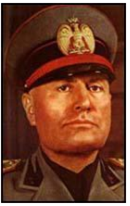 Long Answer Type
Long Answer TypeWith reference to the Union Legislature, answer the following questions:
(a) How is the Speaker of the Lok Sabha elected? State any two Disciplinary Functions of the Speaker.
(b) Explain any two conditions under which a member of Parliament can be disqualified under the Anti Defection Law.
(c) Give reasons to justify why the Lok Sabha is considered to be more powerful than the Rajya Sabha.
The President of India is the Constitutional Head of the Indian Republic. In this context, answer the following questions:
(a) How is the President elected?
(b) Mention three types of Emergencies that the President is empowered to proclaim.
(c) Explain briefly any four ‘Executive Powers’ of the President.
The Supreme Court has extensive jurisdiction. In the light of this statement, answer the following questions:
(a) What are the qualifications of the Judges of the Supreme Court?
(b) (i) Explain the composition of Supreme Court.
(ii) How are the judges of the Supreme Court appointed?
(c) Explain the cases in which the Supreme Court enjoys Original Jurisdiction.
Explain the causes of the Great Revolt of 1857 with reference to the following:
(a) Any three political causes.
(b) Any three military causes.
(c) Any four economic causes.
Through various national movements, Gandhiji mobilised public support to win freedom for India. In this context, state the following:
(a) Any three causes for Gandhiji to launch the Non-Cooperation Movement.
(b) The name given to the uprising of 1942. Two reasons for launching this mass uprising.
(c) The impact of the Non-Cooperation Movement in India’s freedom struggle.
(a) Causes for Gandhiji to launch the Non-Cooperation Movement:
i. Khilafat Movement: The treatment meted out by the British government to the Caliph of Turkey disturbed Indian Muslims as he was seen as their religious head. As a result, they started the Khilafat Movement under the leadership of the Ali brothers— Maulana Azad and Hasrat Mohani. Gandhiji saw this as an opportunity to achieve the much desired Hindu–Muslim unity and made efforts to make common cause with the Khilafat leaders.
ii. Rowlatt Act: The Rowlatt Act of 1919 authorised the British government to arrest and imprison any person without trial and convict him in a court. The authorities could arrest an Indian without a warrant and could conduct his trial in seclusion. Also, the Act implied severe restrictions on the movement of individuals and the suspension of the Right of Habeas Corpus. These were seen as a major breach of trust by Indians who were expecting the British to deliver on their promise of providing
self-government. Gandhiji appealed to the Viceroy to withhold his consent to the Act, but his plea fell on deaf ears.
iii. Jallianwala Bagh Tragedy: The Jallianwala Bagh massacre and the subsequent British reaction to it was a watershed event in the Indian freedom struggle. It led to a huge furore all over the country and hardened the Congress resolve to attain self-government.
(b) The Uprising of 1942 was named the ‘Quit India Movement’.
Two causes of the Uprising of 1942:
i. Failure of the Cripps’ Mission: The Cripps Mission was sent to India under Stafford Cripps for suggesting constitutional reforms in India. However, the proposals of the
Mission were soundly rejected by all sections of Indian society.
ii. Japanese Threat: As Gandhi said, the British presence in India was an invitation for the Japanese to attack her. The withdrawal of the British would remove the bait. The Indian nationalists did not want to fall into the clutches of Japanese slavery from British colonial domination. To ensure that this did not happen, the Quit India Movement was launched.
(c) Following were the different ways in which the Non-Cooperation Movement affected the nature and course of the broader Indian National Movement:
i. Indian National Movement became a Mass Movement: For the first time since its inception, the national movement developed a true mass character with the participation of different classes—workers, peasants, women, children, students and professionals—in the Non-Cooperation Movement.
ii. Generated Confidence among Indians: The Non-Cooperation Movement instilled a new confidence among the Indian nationalists and made them believe that they could fight the mighty British Empire and gain independence from it.
iii. The Congress became a Party of Action: The Non-Cooperation Movement turned the Indian National Congress from a deliberative body to an action-oriented one. The mass character of the movement boosted the radical elements within the Congress. Fostered Communal Harmony: With the assimilation of the Khilafat demands within
the programme of the Non-Cooperation Movement, there developed a semblance of Hindu–Muslim unity within the larger confines of the Indian National Movement.
iv. Promotion of Social Reforms: As a result of the benign programmatic ideals of the movement, major progress was made in the avenue of social reforms. Untouchability was made undesirable within the Hindu social fold and efforts were taken to assimilate the downtrodden within the national mainstream.
The partition of Bengal and the formation of the Muslim League were two important events that had an impact on the national struggle for independence. In this context, explain the following:
(a) Impact of the Swadeshi and Boycott movements as part of the Anti-Partition Movement.
(b) Any three factors relating to the formation of the Muslim League.
(c) Objective of the Muslim League.

(a) Identify the leader in the picture. Give two examples to state that the leader followed an expansionist policy.
(b) State three factors that led to the rise of Fascism.
(c) State four similarities between the ideologies of Nazism and Fascism.
With reference to the United Nations and its related agencies, answer the following questions:
(a) Explain any three functions of the WHO.
(b) State the composition of the International Court of Justice.
(c) State any four functions of the General Assembly.
